It is a quiet time in Iceland with just 132 earthquakes recorded last week. While that is happening. I am going to write about volcanoes in Iceland that are less known, but remain dormant for the moment.
This time around I am going to write about volcano named Snæfellsjökull volcano. Snæfellsjökull volcano is a stratovolcano like Eyjafjallajökull volcano, Öræfajökull volcano and many other of Iceland volcanoes (that is most of them). But unlike many of Icelandic volcanoes the cone shape of Snæfellsjökull volcano is clearly visible to people as it is with Eyjafjallajökull volcano and Öræfajökull volcano. But less so with other icelandic volcanoes that are in this same group of volcanoes. The reason for this is the fact that Snæfellsjökull volcano only has glacier on top of it. But not covered by a glacier on most sides like is the case with Bárðarbunga volcano as a example.
Volcanism in Snæfellsnes peninsula has happened in two time periods. The earlier time period was about 15 to 7 million years ago when this area was a active rift zone of earlier Iceland. The second period of volcanism in Snæfellsnes peninsula started again about 2 million years ago (far as I know, might be wrong however as I did not find any information to confirm this) when volcanism started again after a break that had lasted for about 5 million years. It is not clear why volcanism did restart in Snæfellsnes, as this area is not a active rift zone. But most of Iceland volcanism takes place on a active or forming rift zone. Current volcanism in this this area little. But last known eruption in Snæfellsjökull volcano was in the year 200 A.D +- 150 years. The age of the Snæfellsnes volcano is about 700,000 years old according to recent research into the age of the volcanism in this area.
It is hard to know for sure what type of volcanism Snæfellsjökull volcano makes. But given the data it can be assumed that a volcanism that is not far from what witnessed when Eyjafjallajökull volcano erupted.
Pictures of this area.
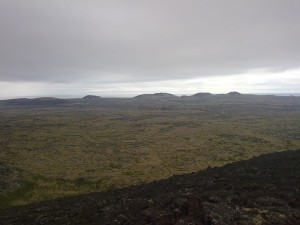
Lava field in Snæfellsnes. This lava field is from Snæfellsnes volcano. Crater rows at distance. Author: Jón Frímann Jónsson. Licence: Creative Commons.
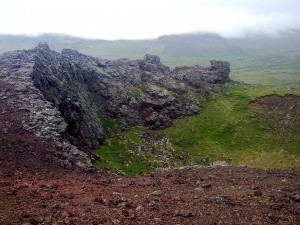
Inside of the one of the craters that are on the Snæfellsnes volcano. Author: Jón Frímann Jónsson. Licence: Creative Commons.
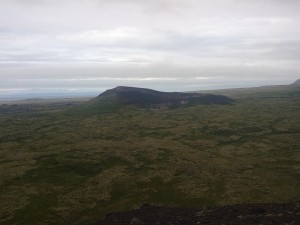
Volcanic cinder cone on the Snæfellsnes. This cinder cone is from Snæfellsnes volcano. Author: Jón Frímann Jónsson. Licence: Creative Commons.
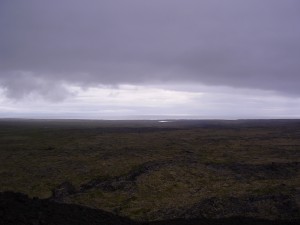
A view over to the Reykjanes Peninsula from a cinder cone. A crack in the lava field can be see below. Author: Jón Frímann Jónsson. Licence: Creative Commons.
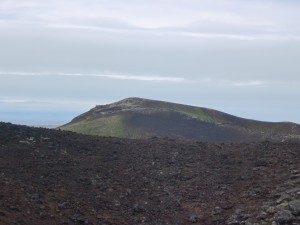
A view from a cinder cone over to the next cinder one in the row. This is on the Snæfellsnes and is part of the Snæfellsnes volcano. Author: Matilde Grácio Licence: All rights reserved. Used with a permission.
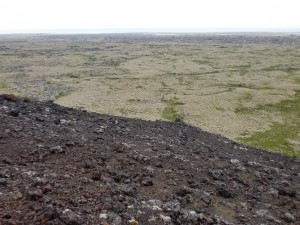
A view from a cinder cone over the lava field. At distance there is the ocean. Author: Matilde Grácio Licence: All rights reserved. Used with a permission.
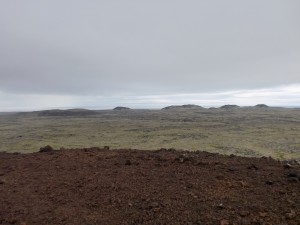
Row of cinder cones at distance. Author: Matilde Grácio Licence: All rights reserved. Used with a permission.
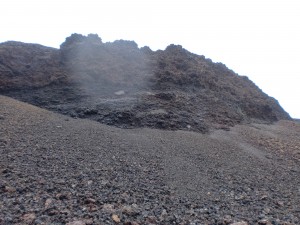
A cut side into a cinder cone. This material was mined by the local population few decades back and used for road construction. This area is now part of Iceland national park. Author: Matilde Grácio Licence: All rights reserved. Used with a permission.
Click on the pictures to get full resolution. But the pictures are large and it might take some time to download them on a slow internet connection.
More information.
Páll Einarsson. „Hvað eru miklar líkur á því að Snæfellsjökull gjósi?“. Vísindavefurinn 30.4.2002. http://visindavefur.is/?id=2347. (Skoðað 23.3.2011). (Icelandic)
JGÞ. „Hvar eru eldfjöllin á Íslandi?“. Vísindavefurinn 29.9.2006. http://visindavefur.is/?id=6219. (Skoðað 23.3.2011). (Icelandic)
Jarðsaga Íslands (Icelandic, Wiki)
Introduction to the geology of Iceland
